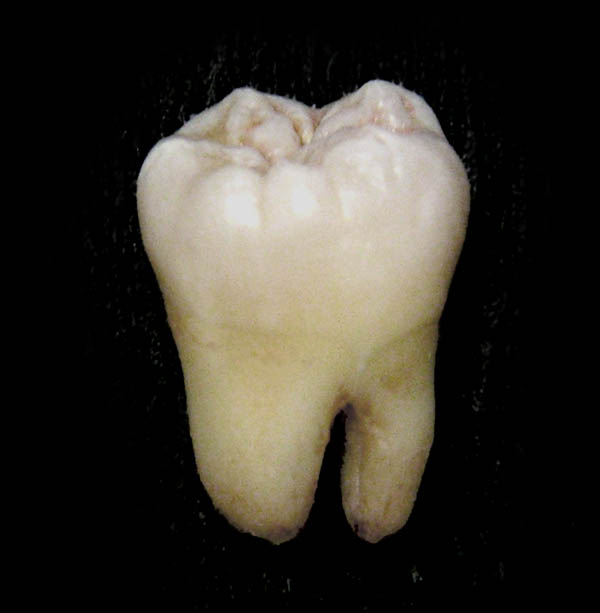Particles of plants trapped in dental plaque has revealed what our ancient ancestors were eating, a new study from the Sudan has shown. There's a lot we don't know about happened when early modern humans swapped their hunter-gatherer habits for agriculture and an urban lifestyle.
ancestors were eating, a new study from the Sudan has shown. There's a lot we don't know about happened when early modern humans swapped their hunter-gatherer habits for agriculture and an urban lifestyle.
Most of the evidence we have is contextual - samples of plants, animals and apparently cooked materials that have been found buried alongside humans remains or signs of human habitation. To prove what people were actually eating is much harder, but now archaeologist Karen Hardy, from the University Autonoma de Barcelona, has found that dental plaque - the hard material that builds up along the gum line - can trap vestiges of what we eat.
Working at Al Khiday in Sudan, she and her colleagues analysed tooth plaque from a large number of skeletons recovered from a burial site dating back up to 9000 years. The chemical hallmarks of smoke inhalation - presumably from fires - and carbon from cooking were present. Also abundant were microscopic grains of starch that showed signs of having been heated including strach from a plant called Cyperus rotundus.
Also known as purple mustard, this plant is now regarded as a weed, but its starch-rich underground tubers were an important source of carbohydrates for our ancestors in many countries. Interestingly, the new results, published in PLoS One, show that individuals were still consuming these tubers long after the onset of agriculture, when superior sources of starch would have been present.
This suggests, Hardy speculates, that these people may have associated the root with potential health benefits, explaining why they continued to use it. Indeed, it does contain chemicals that can suppress the growth of certain strains of bacteria, including Streptococcus mutans, the cause of tooth decay.
This may explain, says Hardy, why the individuals they studied had an unexpectedly low rate of tooth decay. "The new access to plants ingested, which is provided by dental calculus analysis, will increase, if not revolutionise, the perception of ecological knowledge and use of plants among earlier prehistoric and pre-agriculture populations."










Comments
Add a comment